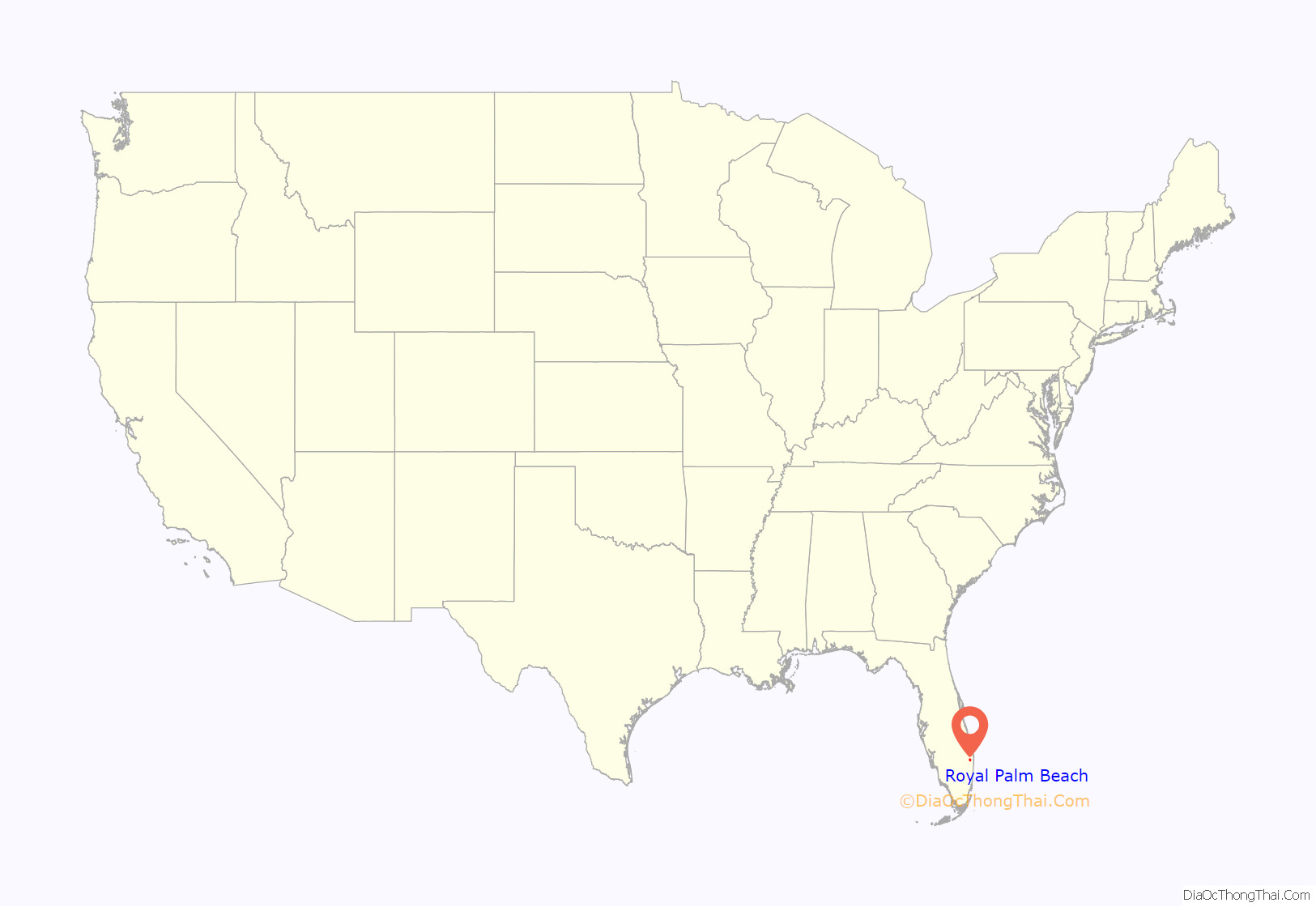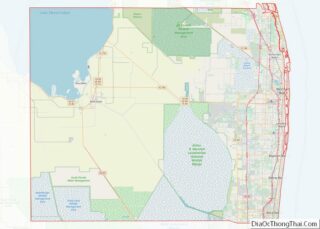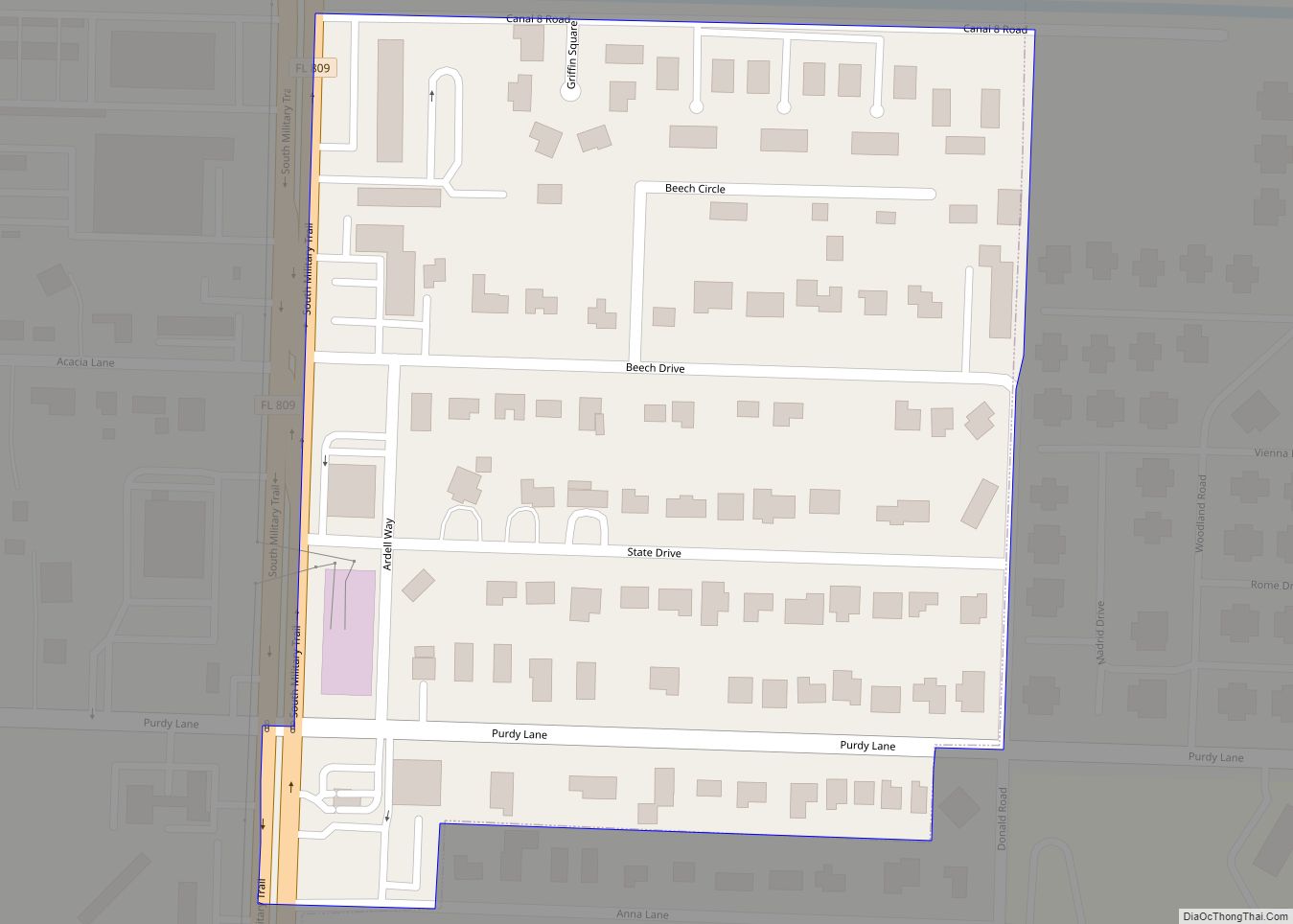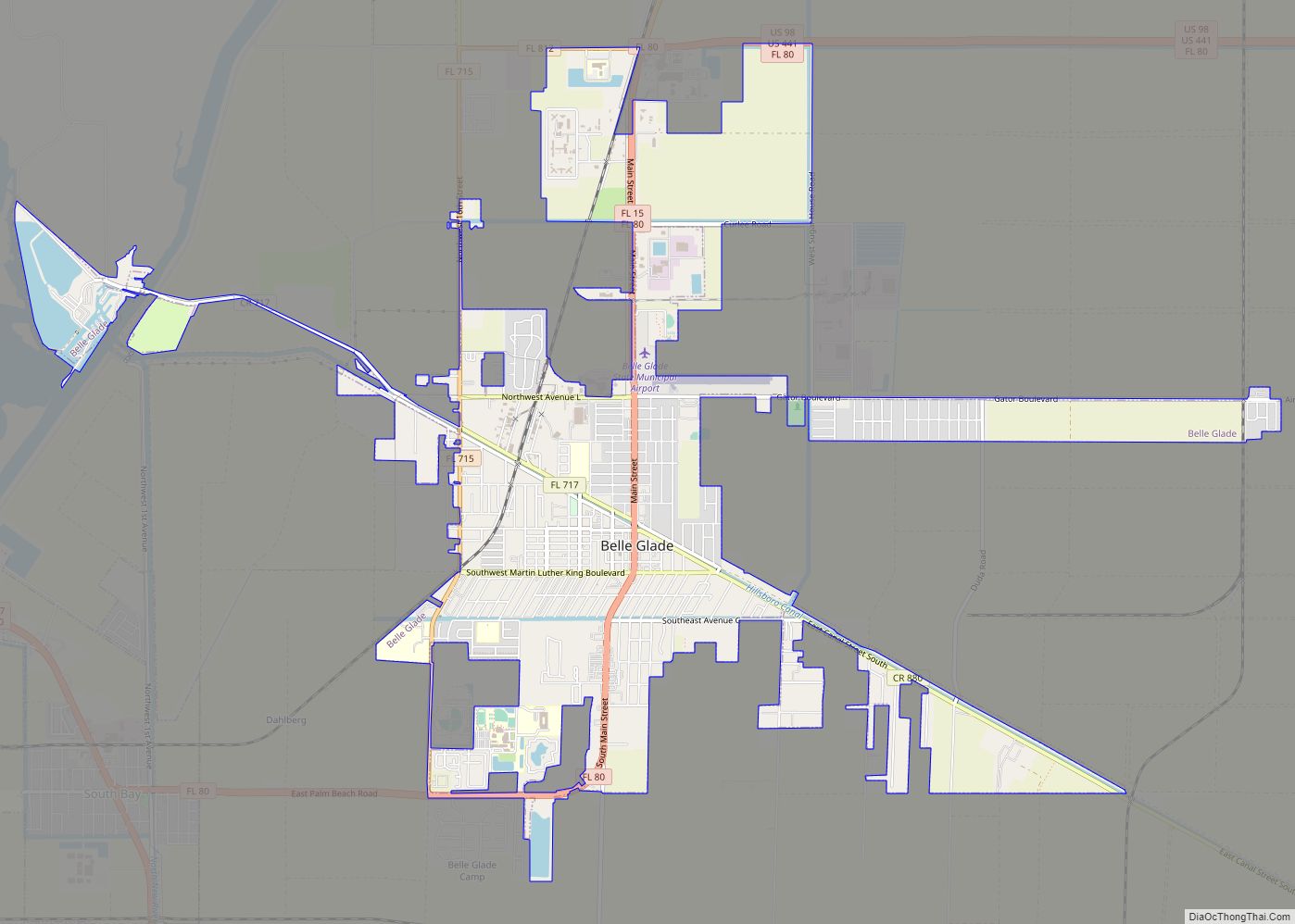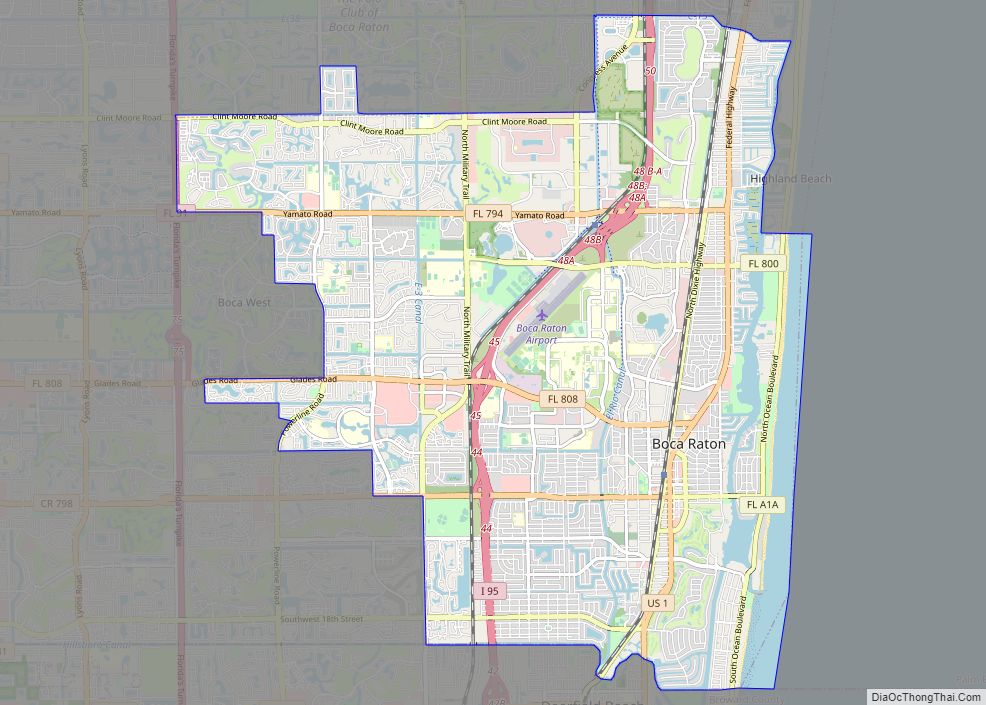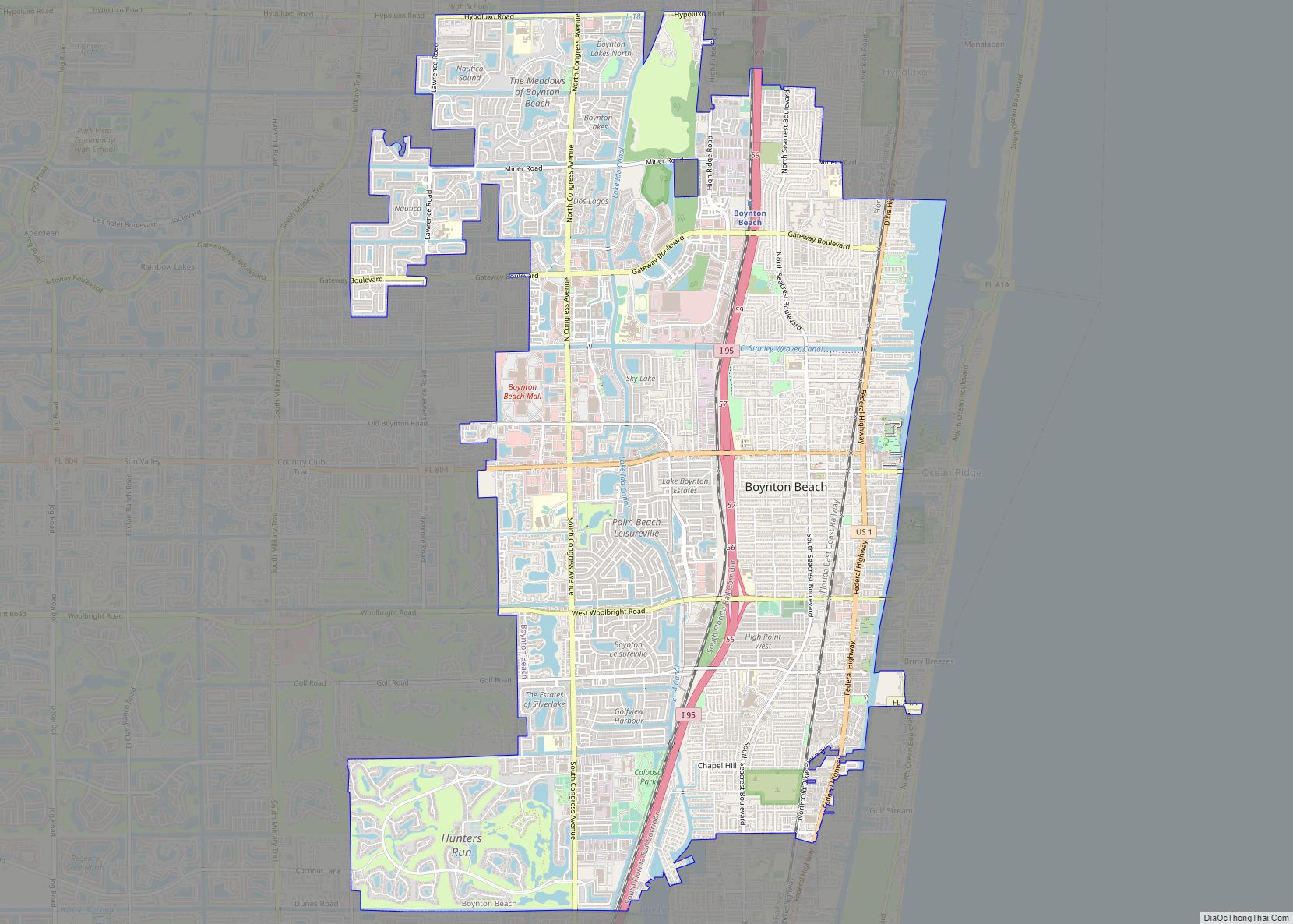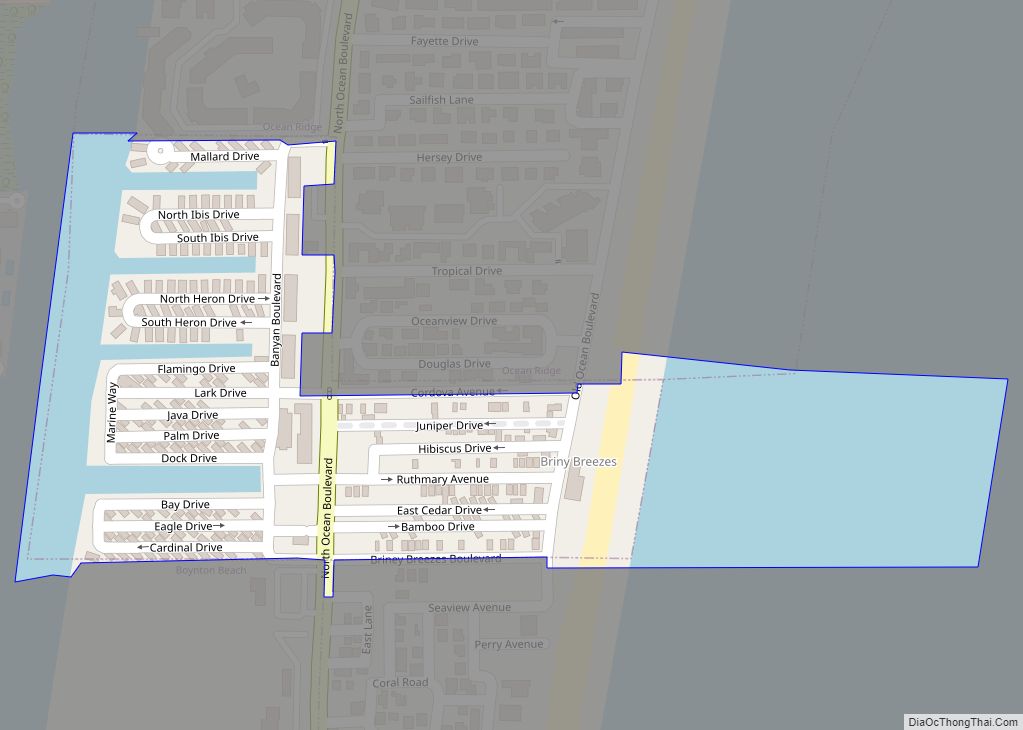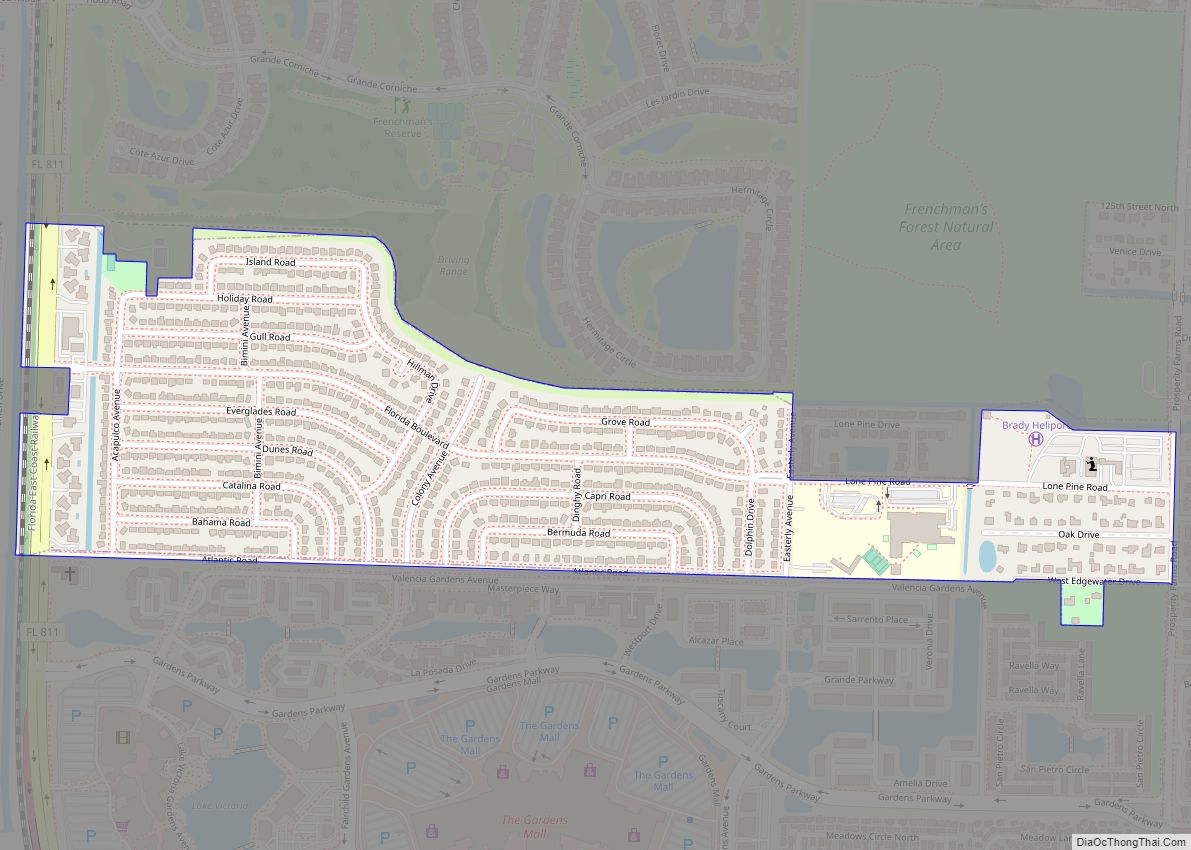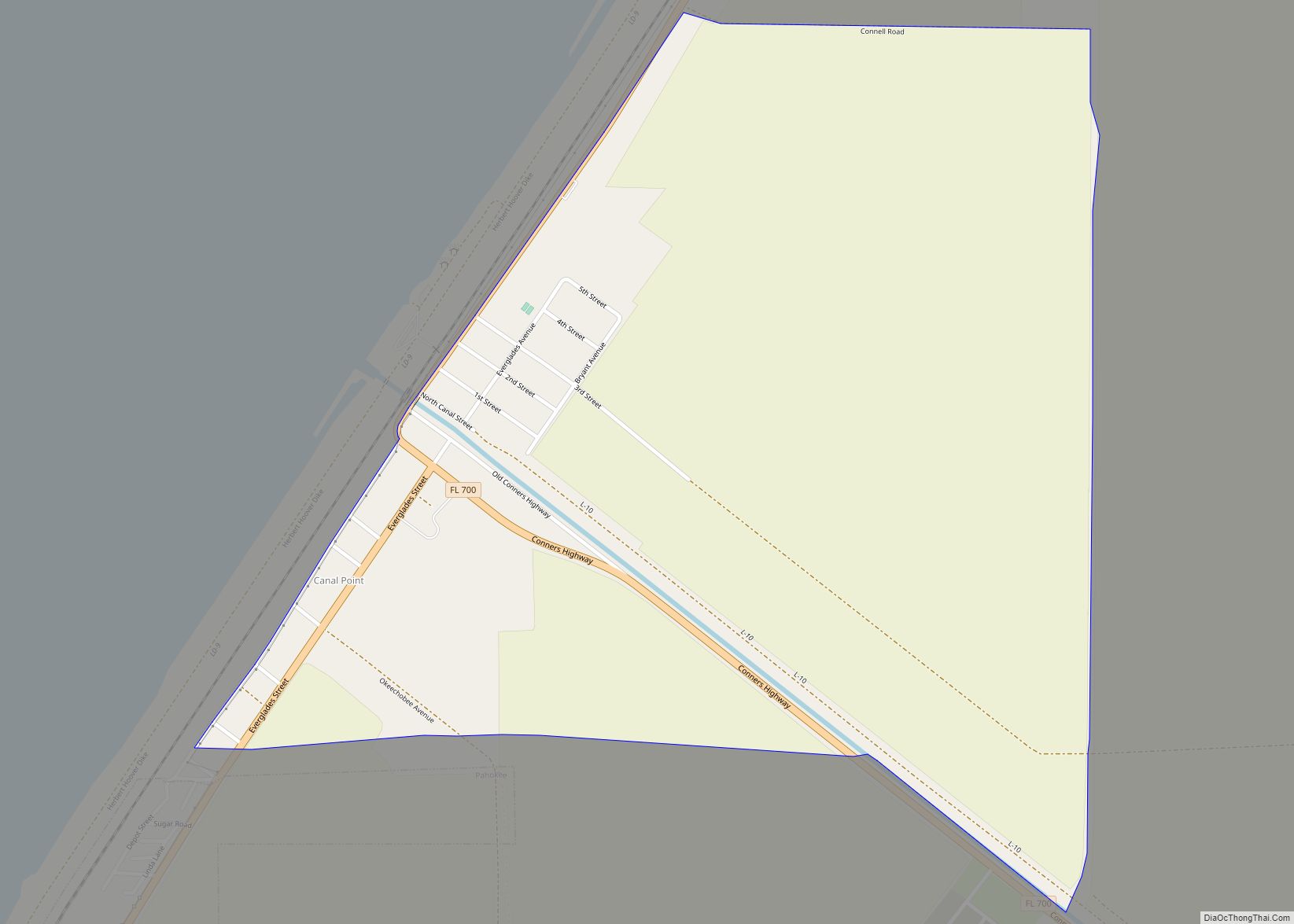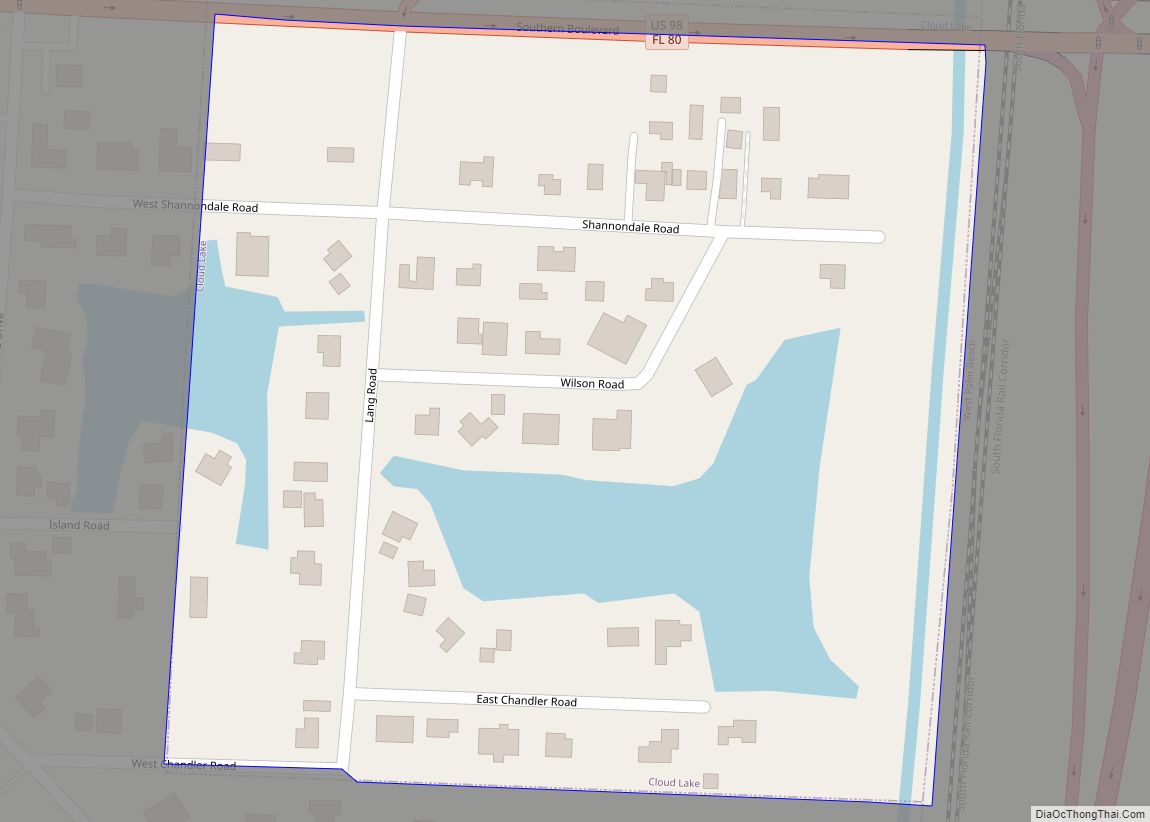Royal Palm Beach is a village in southeast Florida, located within Palm Beach County. The population was measured at 34,140 in the 2010 census. It is part of the Miami Metropolitan Area. Despite its name, the village is located approximately fifteen miles inland from the Atlantic Ocean.
Royal Palm Beach is known for its many parks and general mission to protect green space, as evidenced by the recent acquisition of 190 acres (0.77 km) to create a master central park and the development of 25 acres (100,000 m) preserved into a passive bird watching and nature park. The village offers a variety of activities for the outdoor and sports enthusiast including soccer, basketball, tennis, Pop Warner youth football and cheerleading, senior activities, and year-round golf programs. The public schools within the Village consist of “A”-rated elementary and middle schools and there are numerous private schools offering classes from pre-kindergarten through high school.
| Name: | Royal Palm Beach village |
|---|---|
| LSAD Code: | 47 |
| LSAD Description: | village (suffix) |
| State: | Florida |
| County: | Palm Beach County |
| Incorporated: | June 18, 1959 |
| Elevation: | 16 ft (5 m) |
| Total Area: | 11.70 sq mi (30.29 km²) |
| Land Area: | 11.34 sq mi (29.38 km²) |
| Water Area: | 0.35 sq mi (0.91 km²) |
| Total Population: | 38,932 |
| Population Density: | 3,431.95/sq mi (1,325.03/km²) |
| ZIP code: | 33411, 33414, 33470 |
| Area code: | 561 |
| FIPS code: | 1262100 |
| GNISfeature ID: | 0302697 |
| Website: | http://www.royalpalmbeach.com/ |
Online Interactive Map
Click on ![]() to view map in "full screen" mode.
to view map in "full screen" mode.
Royal Palm Beach location map. Where is Royal Palm Beach village?
History
Incorporated on June 18, 1959, Royal Palm Beach has grown from a primarily uninhabited swamp and natural preserve and former Seminole hunting ground into a thriving village of an estimated 40,000 residents.
It was not until the 1950s, when Philadelphia supermarket magnates Sam and Hattie Friedland purchased 65,000 acres (260 km) for approximately $1.25 million in what is now the Royal Palm Beach village and Acreage areas, that the natural wilderness landed on national fastest growing community lists (in its size category) in the 1980s. The Friedlands subsequently sold their land to Miami developer Arthur Desser, founder of Lefcourt Realty Group. About 4,200 acres (17 km) were earmarked for Desser’s Royal Palm Beach development.
It was Desser’s vision that spurred the initial development of the Village of Royal Palm Beach. A massive drainage project ensued and in 1959, the state legislature granted a charter which named the development Royal Palm Beach.
According to a former Lefcourt engineer now living in Wellington, Desser wanted the name “Palm Beach” to be included in the new community’s name, so it was decided that since Desser also liked the stately royal palms of Palm Beach, he would dub his development “Royal Palm Beach.”
On June 30, 1959, with Seminole tribe officials on hand for the festivities (and to renounce all former claims to the land), a groundbreaking ceremony was held. Engineering began for the village’s myriad waterways and a basic system of roads. A sales/recreational center was built with a motel facility in the area now occupied by the Royal Inn and two bedroom, one-bath model homes were erected starting at $8,250.
Village government—initially in the form of a developer-appointed council—later became popularly elected in 1964. Not until 1977 did the Village Council find a permanent home in the present Village Hall complex. To date, there have been 15 mayors who have served the village—some as single-term and part-term mayors—others, like Sam Lamstein (1982–1990), formal County Commissioner Tony Masilotti (1992–1998), and current Mayor David Lodwick (since 1998) have won voter approval for multi-terms.
Arthur Desser’s dream of a “nouveau” Palm Beach were short-lived, however, with the bankruptcy of Lefcourt in 1961. His interest was bought out by Friedland who then established Royal Palm Beach Colony Inc. to continue village development. A grocery store magnate with no experience in the housing market, Friedland nonetheless was a savvy businessman who put together a team of professionals who set up a comprehensive land sales/development/building enterprise. With the late Herbert Kaplan as RPB Colony CEO, the company and the town grew slowly from 1960-67 — first in the original “Colony” section of floral-named streets east and west of the southern end of Royal Palm Beach Blvd., and then expanded with vigor into the Willows and LaMancha subdivisions (east of RPB Blvd.).
A marketing push began in 1979 to offer to builders tracts of land. With this growth phase the Village ballooned over the next 15 years. In 1983, Crestwood Middle School opened as the first community school followed in 1985 and 1989, respectively, by H.L. Johnson and Cypress Trails Elementary schools. Royal Palm Beach High School opened its doors to 1,100 students in 1997. Schools in the western communities continue to open in rapid succession — often with student bodies at or near capacity the first year. The 2002–2003 school year included the opening of the village’s third elementary school on Okeechobee Blvd., just west of the Madison Green residential development.
In 1986, both Palms West Hospital and Wellington Regional Medical Center opened with 117 and 120 beds, respectively, and both are continuing with major expansion projects to meet the health care needs of local residents. With the hospitals came a building boom of medical office complexes on the campuses of both hospitals, as well as a Royal Palm Beach health center built by West Palm Beach’s Good Samaritan Medical Center.
Since the village’s inception, public safety has been foremost in the minds of residents and village officials. In June 1960, Joseph Klopp became the first Royal Palm Beach police chief. That first year, “Klopp the Cop” was the sole full-time officer with several auxiliary part-timers. Today, the accredited department counts nearly 50 sworn officers in addition to dispatchers, school crossing guards, detectives, a captain, and the chief based in a modern, computerized department in a building within the Village Hall complex. In 2007 the policing duties were contracted out to the Palm Beach County Sheriff’s department with a significant savings to the Village taxpayers.
Royal Palm Beach residents have also appreciated the security of a local fire department since a volunteer force of eight individuals was recruited in a construction trailer in January 1963. In 1969, the department moved its headquarters to a maintenance building in the present Commerce Park, which featured three bays and two trucks. A final move in 1976 to the department’s building on Royal Palm Beach Blvd. enabled the department to expand its manpower and equipment. At that time, the department shared the building with the police department.
Village firefighters weren’t paid until 1972 and the two full-timers on staff made about $6,000 a year. The following year, three more full-time firefighters were hired, and in 1975, Karl Combs became the first full-time chief at a salary of $13,500 a year. With a growing population, and thankfully few structural fires, the focus of the department expanded to include emergency medical treatment. Combs and a department lieutenant were enrolled in the county’s first paramedic-rescue course and, less than a week later, answered a cardiac arrest call for a village resident who would have died had Combs not taken the course. Within the next four years, the department hired 18 additional paramedic/EMT trained firefighters. A second station opened in 1994 at the entrance of the Counterpoint Estates to cut response times to residents living in the State Road 7 area. In March 1999, following a council-authorized study by consultants, a controversial and much-debated decision was made to curtail an independent village fire department and instead merge equipment and personnel with Palm Beach County Fire-Rescue.
Village recreation needs were not overlooked during the booming growth period and since 1974. Under the department’s purview are approximately 325 acres (1.32 km) of parks and green space as well as the village’s 6,300-square-foot (590 m) Cultural Center which opened in 1993.
Since 1990, Royal Palm Beach has been named as a Tree City USA. Its entire area is designated as a bird sanctuary.
Royal Palm Beach Road Map
Royal Palm Beach city Satellite Map
Geography
Royal Palm Beach is located at 26°42′21″N 80°13′36″W / 26.70583°N 80.22667°W / 26.70583; -80.22667 (26.705851, –80.226554).
According to the United States Census Bureau, the village has a total area of 10.1 square miles (26.1 km), of which 9.9 square miles (25.6 km) is land and 0.2 square mile (0.5 km) (1.79%) is water.
See also
Map of Florida State and its subdivision:- Alachua
- Baker
- Bay
- Bradford
- Brevard
- Broward
- Calhoun
- Charlotte
- Citrus
- Clay
- Collier
- Columbia
- Desoto
- Dixie
- Duval
- Escambia
- Flagler
- Franklin
- Gadsden
- Gilchrist
- Glades
- Gulf
- Hamilton
- Hardee
- Hendry
- Hernando
- Highlands
- Hillsborough
- Holmes
- Indian River
- Jackson
- Jefferson
- Lafayette
- Lake
- Lee
- Leon
- Levy
- Liberty
- Madison
- Manatee
- Marion
- Martin
- Miami-Dade
- Monroe
- Nassau
- Okaloosa
- Okeechobee
- Orange
- Osceola
- Palm Beach
- Pasco
- Pinellas
- Polk
- Putnam
- Saint Johns
- Saint Lucie
- Santa Rosa
- Sarasota
- Seminole
- Sumter
- Suwannee
- Taylor
- Union
- Volusia
- Wakulla
- Walton
- Washington
- Alabama
- Alaska
- Arizona
- Arkansas
- California
- Colorado
- Connecticut
- Delaware
- District of Columbia
- Florida
- Georgia
- Hawaii
- Idaho
- Illinois
- Indiana
- Iowa
- Kansas
- Kentucky
- Louisiana
- Maine
- Maryland
- Massachusetts
- Michigan
- Minnesota
- Mississippi
- Missouri
- Montana
- Nebraska
- Nevada
- New Hampshire
- New Jersey
- New Mexico
- New York
- North Carolina
- North Dakota
- Ohio
- Oklahoma
- Oregon
- Pennsylvania
- Rhode Island
- South Carolina
- South Dakota
- Tennessee
- Texas
- Utah
- Vermont
- Virginia
- Washington
- West Virginia
- Wisconsin
- Wyoming
